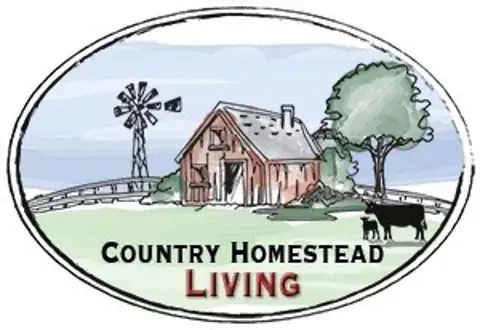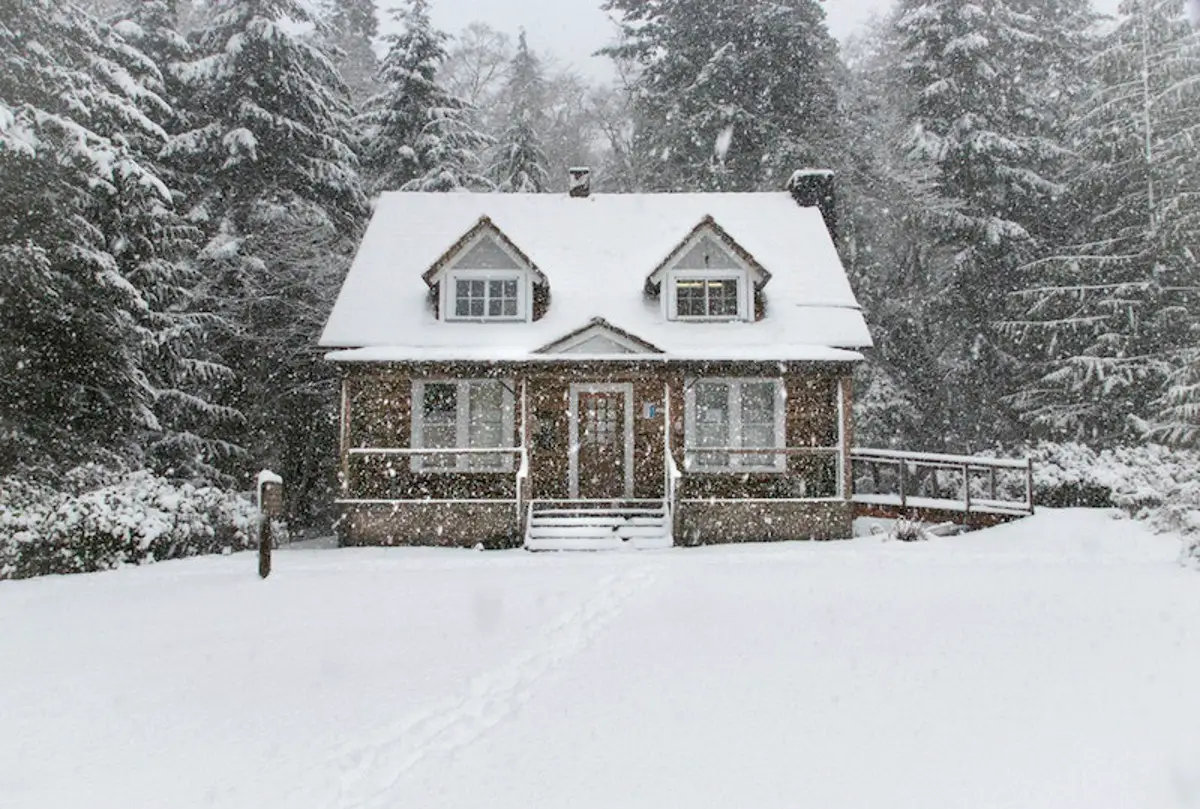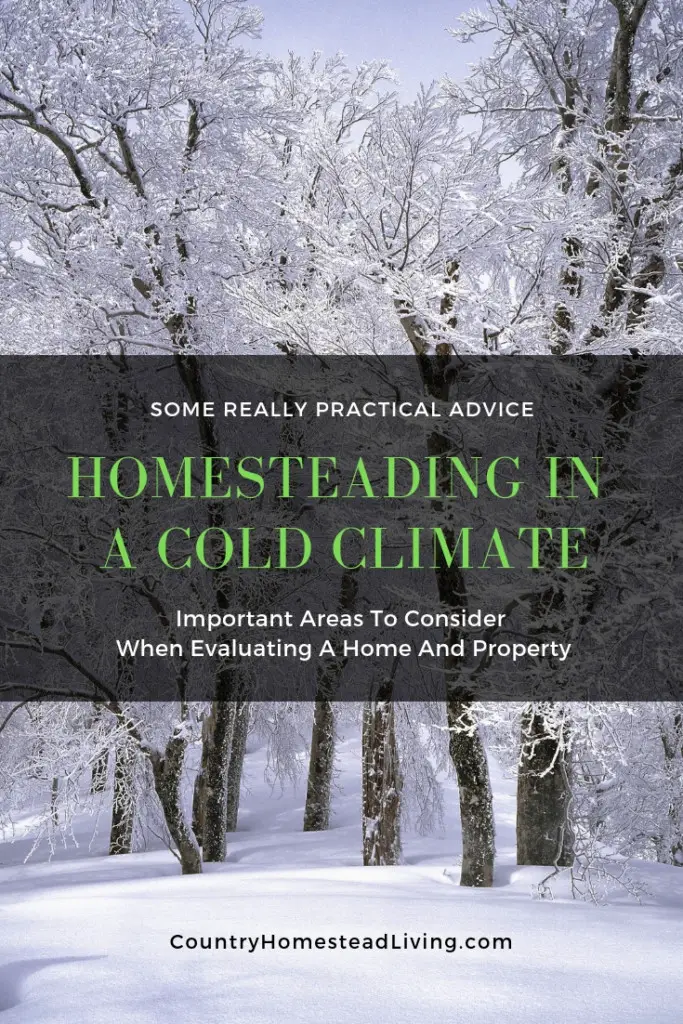When moving to a cold climate the challenge of evaluating a homestead goes far beyond what to wear when outdoors to stay warm.
This article will focus on evaluating a house and a location in a cold climate.
How do I evaluate a homestead in a cold climate?
You must know if the house’s insulation is adequate, if the house’s heating system is adequate, the direction the house faces, the location of outbuildings in relation to the house and what type of micro-climate the property is located in.
Keep reading for some really practical advice!
Evaluating A Home And Property In A Cold Climate
The important areas to evaluate in a home and property in a cold climate are:
- Is the house well insulated?
- Is the heating system adequate for the house size?
- Which direction does the house and property face?
- Are there out building on the south side of the house or driveway?
- What type of micro-climate is the property located in?
If you understand how to evaluate these questions you will end up being much happier and warmer in your home in a cold climate!
Is The House Well Insulated
We rented two different houses after moving to a cold climate.
The first house was well insulated.
It had been built by someone native to the cold climate we chose to move too.
The second house we rented was not well insulated.
It had been built by someone who moved from a much warmer State to the south who did not understand the value of adequate insulation for a cold climate.
Both houses were about 2500 square feet in size.
And both houses were two story with a partial basement that was below ground level.
The first house was heated by a wood burning stove with electrical heaters in the bathrooms and kitchen that could be set to come on if you were away when the fire in the wood stove went out.
The second house was heated by an oil furnace located in the basement and had back-up baseboard electric heat.
About a year after moving into the second house a small wood burning stove was added in the living room.
The recommended R-values for insulation in the part of the country we had moved to were ceilings at least R-30 or more (9.5 -10″ of insulation).
Walls R-19 (5.5″ of insulation).
And if the house had a crawl space, R-11 minimum (3.5″ of insulation) under the floors above the crawl space.
It is usually a simple matter to look in the attic and see how much insulation is there.
This is something I failed to do in both houses.
House number two had only R-19 (5.5″) of insulation in the ceiling.
It is hard to know how much insulation is in the walls.
But the quickest way to estimate wall insulation when walking through a house is to note the thickness of the walls as seen beside a window.
If the thickness of the walls, from outside to inside, appears to be about as long as a U. S. dollar bill, a little over 6″ thick, the insulation is probably R-19.
If the wall is a couple of inches less in thickness, the insulation is probably R-11.
If the insulation is not adequate, expect to have a higher heating bill in the winter.
And the house could be difficult to heat, meaning you stay cold all winter long.
Is The Heating System Adequate For The House Size
Unless you have experience installing or maintaining heating systems, this is an area that will involve a fair amount of guesswork.
You could pay to have an expert evaluate the heating system.
There are some general guidelines that help most of us in evaluating this area of a house.
- If there is a central heating system such as a furnace with duct work, is there at least one floor register in each room of the house?
- Where in the room are the floor registers located?
- It is best to have them located on the center of an outside wall for the best airflow to keep the room warm.
- If it is a large room, such as a living room, there may be 2 floor registers spaced an even distance apart on the outside wall.
- If the room has more than one outside wall, are there floor registers on each outside wall?
- If the heating system is a wood stove, is it located near the center of the house? If not, you will have cold areas in those rooms that are further away from the wood burning stove.
Wood stoves that do not have an electrical blower on them heat by radiant heat.
The heat radiates out from the stove.
- If the floor plan is not fairly open, if there are long hallways or rooms that heat has to radiate around more than one corner, expect to have cool or cold areas in the house in winter.
Which Direction Does The House And Property Face
In the Northern Hemisphere a house with a long side facing south and with several windows on the south side is best.
A house facing this direction takes advantage of passive solar warmth from the sun.
The next best are houses facing either southeast or southwest.
If a short side of the house faces south, southeast or southwest the more windows that side has, the more warmth can be obtained from the winter sunshine.
For passive solar warmth and maximum sunlight for a garden, the property should be south facing or on the southern slope of a mountain.
If south facing is not possible, the next best is south eastern followed by south western facing property.
Houses that face other directions will not benefit as much from the warmth that can be obtained from the winter sunshine.
Houses that face north will, as a general rule, tend to be colder in winter.
In cold climates in the Northern Hemisphere many houses will have smaller windows on the north side.
Or have no windows at all on the north side.
If you are in a cold climate in the Southern Hemisphere the best directions for a house to face are north, north east and north west respectively.
Are There Any Buildings On The South Side Of The House Or Driveway
In the Northern Hemisphere, buildings on the south side of the house can shade the house in winter.
Reducing the amount of heat obtained from the sun.
These buildings work against any passive solar benefit that could be obtained from the sun.
If there are buildings on the south side of the driveway and they shade the driveway during the winter you have a potentially dangerous situation.
These buildings will keep the sun from melting the snow on the driveway.
Even with snow plowing, the shaded area will be a sheet of ice all winter long.
This will subject your family to an increased chance of falls and broken bones in the winter.
What Type Of Micro-Climate Is The Property Located In
Micro-climates may be a new idea to those who live in warmer climates.
In cold northern climates in the mountains, micro-climates can mean the difference between more snow and colder temperatures.
There can be places that are only a mile apart in winter.
But there can be several inches less snow and the temperature can be several degrees warmer.
How much less snow and how much warmer temperature will depend on the particular micro-climate.
Micro-climates are created when the prevailing winds pass over bodies of water .
Or when mountains divert the winds so that some areas get more wind and some less.
Bodies of water tend to have a more stable temperature so prevailing winds can pick up some warmth when blowing over a lake.
Likewise, some micro-climates are warmer.
Because the prevailing winds are blocked or split by a mountain.
When this happens the climate in the mountains downwind shadow can be several degrees warmer than the climate on either side of that area.
Elevation plays a role in micro-climates, too.
This role may seem counter intuitive to many people.
Most people believe that the warmest area is at the base of a mountain.
And the coldest place is at the peak.
However, in a cold mountainous area the warmest spot, all year round, is about 500 feet up on the side of the mountain!
Let me give an example first,
Then the explanation of why this is the case.
I have a friend who lives about 30 minutes from me.
He is a Master Gardener and purchased some land on which he wanted to raise produce to sell to local stores.
His land is at the base of a mountain that is about 7,000 feet high.
After attempting to raise produce for 5 years and having his garden die because of a late frost in mid-June for 3 of those 5 years, he now earns a living doing something else.
I have another friend who lives a little above the 500 foot level of the mountain the first friend lives at the base of.
Both friends live on the same side of the mountain.
The one who lives on the side of the mountain has raised a garden for the last 18 years.
And has never had a late frost in mid-June kill his garden!
Why the difference?
Hot air rises and cold air seeks to a lower level.
As it gets dark the hot air moves up the mountain.
And the cooler air moves down the mountain.
When the sun comes up in the morning it warms the peak first.
As the shadows are chased away by the sunshine going down the mountain side, the last area to be warmed is the base of the mountain.
As the sunshine goes down the mountain side it warms the cooler air which starts to rise.
Thus the last place to get warmed in the morning is the base of the mountain.
When you live less than 50 miles from the Canadian Border and at the base of a 7,000 foot mountain there is a lot of cold air that settles down in the valley in mid-June.
At night the valley is colder than it is 500 feet above the valley.
It is not unusual for it to be freezing or below, for part of a night at the valley level in mid-June.
So there is the chance of a killing frost at the valley level.
But not at the 500 foot level!
As the mountain side warms up in the mornings in mid-June there is enough warmth at the 500 foot level to keep the plants from freezing when the cold air from the valley floor rises to the 500 foot level.
The Evaluation Process
The first house we rented was kept warm by the wood stove.
It was placed almost dead center of the house on a short wall with a large opening on each side to go into the kitchen and up to the second level.
The steps going up to the second level were wide.
And there was an area at the top of the steps that was suitable for a desk and small open office with bedroom and bathroom doors opening into that space.
As stated above, this house was properly insulated.
The second house had a kitchen in the middle of the first floor with a double garage on the front side of the kitchen.
On either side of the kitchen was a large room, living room on one side and family room on the other side.
The stairs to the second level were narrow and led off the living room side of the kitchen.
Upstairs the bathroom and 3 bedrooms were also off of a narrow area making the air flow into those rooms not as easy as it was in the first house.
The second house had several problems.
Wood stove placement on one side of the house and a floor plan that did not allow for good air flow.
Also inadequate insulation and too small an oil furnace with no heat duct to the master bedroom.
The house was cold in winter.
Even with the oil furnace turned up as high as it could go.
The oil bill was several hundred dollars each month.
When the wood stove was added, it was too small for the house.
And it was placed in one end of the living room.
It did help keep the living room warm which was nice.
It helped some on that end of the house but the family room end of the house was cold all winter long.
If you use the methods in this article to evaluate a location and the home on that location, you will be much happier with your home in a cold climate.
Related Questions
How do manufacturers rate the heating capability of wood stoves?
When you see the square feet that a wood stove is rated to heat that determination was made this way…
The stove was placed dead center of the house.
No ceiling was over 8 feet high.
The house was properly insulated for the climate.
All windows were at least double pane windows.
Changing any one or more of these factors markedly reduces the area in square feet the stove will heat.
If the stove is not “dead center” of the house you will have cold areas in the house.
In that case it is best to get a wood stove that is one size larger than the size of the house in square feet rating.
What winter preparations are needed on a homestead?
To a certain extent it depends on what you have on the homestead.
We remove the greenhouse plastic from our Hoop House Style Greenhouse and cover plants that are in large pots.
We remove the 3/4 inch plastic water line from an outdoor facet to the garden and replace it in the spring.
We make certain that the chicken coop and run are ready for snow.
We have the winter fire wood cut, split and under cover.
The homestead vehicles and equipment that needs to be winterized is winterized.
What winter homestead chores do you have?
You still have to feed the animals and be sure they have water to drink that is not frozen.
There is shoveling the sidewalks, snow plowing the road in and if necessary removing snow from the roofs of homestead buildings.
There is keeping the house warm which means bringing in the wood and removing the ashes regularly from the wood stove.


